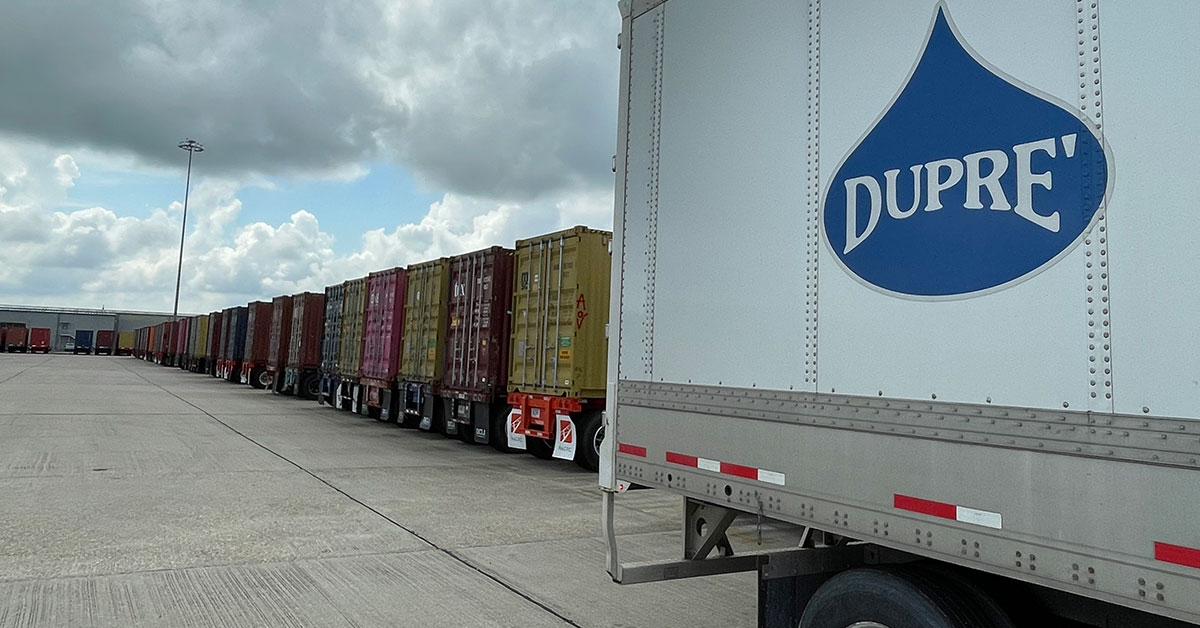Regulations within any industry, but especially the trucking industry, are complex and ongoing. Between government officials, trade organizations, drivers, shippers and carriers, there are many people and organizations impacted by regulation.
It’s important for logistics professionals to stay updated and involved in the latest information and legislation regarding trucking industry regulation. When you actively participate in your industry association, the American Trucking Association (ATA) and the National Tank Truck Carriers (NTTC) for example, your logistics expertise can be utilized to develop a solution that can benefit everyone through safer, more cost effective and efficient supply chain management.
One of the biggest challenges at the moment is staying abreast of the latest regulatory issues, their challenges and how they may impact your business. Following are a list of the top four regulations to monitor.
Hours of Service (HOS) Regulation
The amount of time a driver spends on the road is critical to the safety of the driver and neighboring motorists, but the time it takes for a driver to pick-up and deliver the product as expected by supplier and customer is imperative to the overall supply chain management function.
In 2013, the Federal Motor Carrier Safety Administration (FMCSA) introduced changes to the way drivers tracked their hours while on duty. The big changes included:
- Drivers have to include two 1:00 a.m. – 5:00 a.m. time intervals within the required 34-hour restart period.
- Drivers can only restart once per week (168 hours.)
- Drivers are required to take one 30-minute break during every eight hours of driving.
This regulation significantly impacts drivers as well as overall supply chain management. An already limited amount of drivers loses time and money by not being able to operate at night; and suppliers and carriers are challenged with revamping their supply chain to accommodate the regulations, impacting overall capacity management. Both results from regulation can increase costs and financial risks for carriers.
This regulation was altered in 2014 through the Consolidated and Further Continuing Appropriations Act of 2015, suspending the enforcement of requirement for use of the 34-hour restart. According to the FMCSA web site, this will remain suspended until the CMV Driver Restart Study is provided to Congress.
Logistics professionals must stay compliant with the current HOS regulation, and continue to monitor its movement through the legislature.Effective supply chain management with particular attention being paid to HOS compliance will keep drivers and carriers on track, and ensure a seamless transition into possible HOS regulatory changes, thereby keeping financial risks to a minimum and effectively managing capacity.
CSA (Compliance, Safety, Accountability) Initiative
The FMCSA developed the CSA safety and compliance initiative to help identify large trucking companies that aren’t complying with safety rules, with the hopes of investigating and taking unsafe carriers off the roads.
The program rates carriers in the following areas and then weights them against their peers. The Safety Measurement System (SMS) process assigns points for deficiencies in seven areas, known as Behaviors Analysis and Safety Improvement Categories (BASICs).
- Unsafe driving
- Crash indicator
- Hours-of-service compliance
- Vehicle maintenance
- Controlled substances and alcohol
- Hazardous materials compliance
- Driver fitness
While this system does provide information on how a particular carrier’s safety record compares to that of its peers, there are concerns about the details of the program.
First, not all carriers are included in the database, meaning highly effective and ineffective carriers are not available for shippers to access. In addition, the fairness of the rating, especially with regard to accidents isn’t absolute. Typically, truck drivers are not at fault in car-truck accidents; according to the ATA, only one-quarter of crashes are the fault of the truck driver. Yet, through the CSA system, drivers and carriers are penalized, resulting in a lower overall CSA rating.
Logistic professionals need to continue to maintain rigorous safety standards to ensure the safe transportation of product for suppliers and drivers. Suppliers should use the CSA standards as a guideline along with other carrier qualification measures to assess a carrier’s ability to meet transportation needs.
Safety is critical, and when not properly managed, can be very costly. It’s important to make certain that your safety standards meet and exceed customer expectations, ensuring effective supply chain management and a cost-efficient solution.
Drug and Alcohol Clearinghouse Implementation
Under current regulations, trucking companies are mandated to test for drugs and alcohol during the driver pre-hire process and after a driver has been involved in an accident. In an effort to centralize driver information based on their drug and alcohol tests, FMCSA has proposed the development of a drug and alcohol clearinghouse that would monitor all commercial driver’s license (CDL) holders throughout the country.
Proponents of this regulation believe that this will prevent potentially unsafe drivers from “falling through the cracks” when changing carrier employment from state to state. Opponents believe that the rule only covers part of the issue, and claims that the clearinghouse does not work to prevent distracted or drowsy driving.
Drug and alcohol abuse is an obvious concern for carriers as they manage their ever-shrinking driver pool. It’s imperative to follow current regulations and once a clearinghouse is established, use that as a supplemental guide to ensure safe, sober drivers.
Electronic Logging Devices (ELD) Mandate
The federal government’s mandate of the use of Electronic Logging Devices (ELD) in all trucks on the nation’s highways, required to be implemented in 2017, will have a significant impact on carriers and drivers.
In the past, drivers would manage all of their hours of service, loads carried and miles traveled on paper, taking time to record their day’s work; all within the expectation that written hours were actual hours. Unfortunately, this wasn’t always the case. Drivers were manipulating written hours to gain additional paid time, increasing driver fatigue-related crashes.
Smart logistics companies have already started using electronic logging technology to track drivers, number of legal hours and the amount of deliveries completed daily. While initial usage results are positive, saving driver time and money in completing paperwork and decreasing total crash rates, this regulation exacerbates the driver shortage and creates capacity challenges.
While all of the above regulations impact the logistics industry, the Drug and Alcohol Clearinghouse implementation and the ELD usage mandate will create the greatest ripple once they are put in place. These two regulations in particular exacerbate the driver shortage already having an effect on suppliers and carriers alike. Current capacity is tight, and the driver shortage along with the improving economy will significantly challenge the logistics industry.
As you continue to monitor regulation movement and change within the trucking industry, work closely with your logistics partner to effectively manage current and potential updates. Through this partnership, your business can manage expenses, reduce risk, improve compliance and develop a cost-effective supply chain that delivers results.

